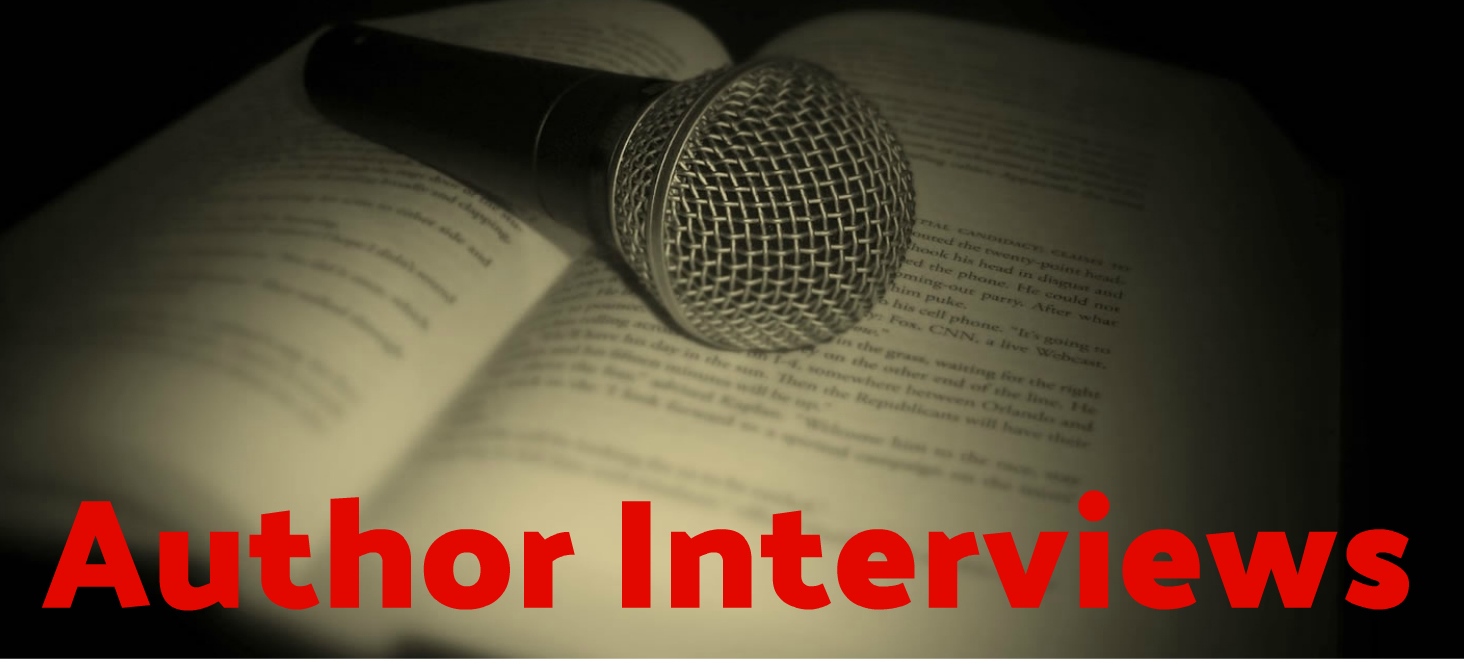
In-Depth Discussions with Today's Darkest Talents
Maestro of Shadows: Jeanne Cavelos and the Rise and Fall of the Dell Abyss Horror Imprint
By, Jason S. Ridler
Introduction
Jeanne Cavelos has been a force for good in the horror world for close to two decades. A trained scientist who worked for NASA, Cavelos left the space race to earn an MFA and in 1986 began her work in publishing, soon becoming a senior editor at Bantam Doubleday Dell. Here, she created and edited both the Dell Abyss imprint (psychological horror) that won her the World Fantasy Award for editing, as well as the Cutting Edge literary imprint. During her tenure as a senior editor she worked with veteran horror authors including William F. Nolan and Dennis Etchison, as well as then emerging talents like Kathe Koja, Poppy Z. Brite, and Brian Hodge.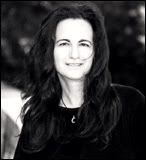 In 1994, Cavelos left publishing to focus on her own writing, which has included four Babylon Five novels and her forthcoming novel Fatal Spiral, a science-fiction/horror thriller. Still interested in working with emerging writers whose work is near publishing level, she created the Odyssey Writing Workshop, an intensive six-week programme for novice writers of science fiction, fantasy and horror. Cavelos has also kept her editing chops as a freelance editor (the Jeanne Cavelos Editorial Services) and recently with the Stoker-nominated anthology The Many Faces of Van Helsing, currently in mass market paperback.
In 1994, Cavelos left publishing to focus on her own writing, which has included four Babylon Five novels and her forthcoming novel Fatal Spiral, a science-fiction/horror thriller. Still interested in working with emerging writers whose work is near publishing level, she created the Odyssey Writing Workshop, an intensive six-week programme for novice writers of science fiction, fantasy and horror. Cavelos has also kept her editing chops as a freelance editor (the Jeanne Cavelos Editorial Services) and recently with the Stoker-nominated anthology The Many Faces of Van Helsing, currently in mass market paperback.
Here, we see how Cavelos earned a reputation for being one of the best editors in dark fiction of the past two decades, the many celebrated fruits of her labor, and her decision to stake out on her own after surviving the horror bust of the early 1990s.
Education of a Horror Writer
While a trained scientists, science writer and science fiction author, Cavelos had long enjoyed horror fiction before entering publishing, with a predilection for high body counts. “Horror was definitely my first love, and it remains the closest to my heart. I won a Halloween writing contest in 2nd grade with a story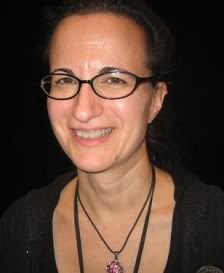 about a witch. I loved writing stories about killers sneaking up on unsuspecting kids and killing them. My favorite novels, as a child, were those in which the characters were killed off one at a time, in a variety of creative ways. I loved the neatness of it, the security of a pattern in which chaos would reign. The horror novel that I re-read many times as a fourteen-year-old was Horrorscope #2: The Revenge of the Taurus by Robert Lory. A bunch of actors and film professionals visit the isolated mansion of a film producer on the isle of Crete. As it says on the back cover, "One of the guests decides to go for a swim. He dives off the board, and shrieks of agony immediately split the night. His screams become more wildly convulsive, and the horror-stricken guests gape at the sight of the man's melting flesh being devoured by the acid contents of the pool. Before their eyes, a human being is reduced to a writhing, splashing skeleton!" Who could resist that? They continue to die, of course, one by one, in various creative ways. A simple plot, but I still love it. Other teen favorites were Lovecraft, Poe, Michael McDowell, Stephen King, Peter Straub, and Shirley Jackson.
about a witch. I loved writing stories about killers sneaking up on unsuspecting kids and killing them. My favorite novels, as a child, were those in which the characters were killed off one at a time, in a variety of creative ways. I loved the neatness of it, the security of a pattern in which chaos would reign. The horror novel that I re-read many times as a fourteen-year-old was Horrorscope #2: The Revenge of the Taurus by Robert Lory. A bunch of actors and film professionals visit the isolated mansion of a film producer on the isle of Crete. As it says on the back cover, "One of the guests decides to go for a swim. He dives off the board, and shrieks of agony immediately split the night. His screams become more wildly convulsive, and the horror-stricken guests gape at the sight of the man's melting flesh being devoured by the acid contents of the pool. Before their eyes, a human being is reduced to a writhing, splashing skeleton!" Who could resist that? They continue to die, of course, one by one, in various creative ways. A simple plot, but I still love it. Other teen favorites were Lovecraft, Poe, Michael McDowell, Stephen King, Peter Straub, and Shirley Jackson.
“These days, I still passionately love the works of all of those authors - Lovecraft's "At the Mountains of Madness" is one of my favorite stories, and King's The Shining and McDowell's Toplin are two of my favorite novels - but I'd add more: Tim Lucas (Throat Sprockets blew my mind), Patrick McCabe (The Butcher Boy), Ian McEwan (The Comfort of Strangers), Whitley Strieber ("The Pool"), David Morrell ("Nothing Will Hurt You"), Charlotte Perkins Gilman ("The Yellow Wall-paper"), and, of course, all of the authors I've edited.
“I love horror that surprises me and disturbs me. I love psychological horror, and I love ambiguity in horror. I want the horror to work on multiple levels, and I want to be mentally challenged, as well as emotionally moved. For me, horror comes as much from considering some new possibility as from fearing what is actually happening.”
Horror films also played a large role in developing her taste for dark fiction. “When I was little, my mother would take me to dusk-to-dawn horror marathons at the drive-in. She liked the movies more for their racy content than for the scares, but I was thoroughly entranced by the foreboding atmosphere of lurking horrors - as well as the free packet of green blood we would get at the gate. My favorite movie of those early years was 2,000 Maniacs. A bunch of Yankees on vacation in the South are detoured by some Confederate ghosts come back to life for revenge, and are killed in - you guessed it - various creative ways. But these are really creative.
“More recent horror movie favorites include Frailty (it provides great mental twists and something frightening to consider), Hellraiser (sick, operatic grandeur crossed with mythic power), Evil Dead (there is no smart way out of this horror - you'll get killed even if you don't go in the basement, and that really scared me), Dawn of the Dead (the original!), Psycho, A Nightmare on Elm Street (when his arms reach across the alley), Re-Animator (sick, sick, sick!), Halloween (pure, stripped-down horror), The Exorcist (rich and fascinating), There Will Be Blood (awesome character), Audition (super disturbing), The Sixth Sense (haunting), The Others (another great character), Memento (a very disturbing ending that lingers), and for the SF and horror intertwined category, Alien and A Clockwork Orange.” As can be seen from both the breadth of interest, Cavelos had a richer palate for horror than most, all of which would be imbedded in her vision of the Dell Abyss and Cutting Edge imprints.
Birth of an Abyss
After leaving behind a successful career at NASA, Jeanne Cavelos earned an M.F.A. in creative writing and needed a day job while she perused her own writing career. “I figured working in publishing would teach me how to get published, so I interviewed for a bunch of entry-level positions in the New York book industry. I was hired at Doubleday as an editorial assistant in the Religion Department. Little did they know . . .”
After nine months, she interviewed for a different assistant job in non fiction. “At the time, Dell was publishing some horror, though it wasn't an organized program, and most of it wasn't very good. Various editors would come across horror manuscripts, think, "Well, some people like this stuff," and buy them. Gradually, the editors started passing these horror manuscripts to me to handle. Somehow, just by looking, they knew that all the weird stuff should go to me.”
This was at the tipping point of the 1980s horror boom that had risen in the wake of the success of Stephen King, Anne Rice, Dean Koontz, and others. “I hadn't been aware of the boom,” Cavelos recounted, “except as a reader, finding tons of horror novels in the store, reading all kinds, and finding some good and a lot bad.” Then the bust hit Dell. And Cavelos found an opportunity in the wake of hardship.
“Dell's horror novels, which had done fine when horror was hot, riding the wave with all the rest, weren't doing well anymore . . . A typical horror novel in the 1980s was selling over 100,000 copies. In the 1990s, many publishers were lucky to sell 30,000 copies of a horror novel. As an author, it's upsetting to consider that your novel may only do as well or as poorly as the market.”
Then, the problem became manifest. “One day the editor-in-chief called me into her office and said that Dell was going to discontinue publishing horror, unless I could come up with some new vision for the program and convince everyone that horror could sell.
“I came up with the idea for Abyss, which basically reflected my feelings about the horror genre. Horror had been hot in the 1980s, and whenever a genre is hot, it gets overpublished. Editors desperately solicit every novel they can find in the hot genre and publish even sub-par work, and it pretty much all sells, because readers are eager for this material. Then readers start to become dissatisfied, as they take chances on unknown writers and are disappointed. They buy less in the hot genre, limiting their purchases to a few authors they trust, and it becomes no longer hot. This is where horror stood in 1990, when Abyss was created.
Cavelos knew it was time for a change in perspective. “I felt that the line had to make a commitment to quality, and to state that commitment in each book. With luck, that would convince the reader to take a chance on it. I also felt that a lot of horror had become predictable, formulaic, and even silly. Too many of those published in the horror boom were doing variations on Stephen King, since he was the king of the boom. We'd had too many stories about haunted houses and evil children and ancient Indian burial grounds.”
What she wanted was richer and more diverse than strict adherence to tropes. “I don't like to lay down edicts about horror, since the great strength of the genre is how much freedom it provides. Horror doesn't dictate a plot, as mysteries and romances do; it doesn't dictate a setting, as Westerns and, to some degree, science fiction and fantasy do. To be a part of the horror genre, all that's required is that the story evokes strong, dark emotions - anything from apprehension, fear, terror, horror, disgust, anger, despair, numbness, loss, morbid fascination, and disturbing thrills, to awe. But I believe that horror should provide ‘vision and revelation,’ as Steve Tem says, and it can do neither if it is predictable. Horror shouldn't be predictable. It should be the exact opposite of predictable. And it had become all too predictable. I knew that horror could do more, and that it should do more. In a sense the genre had been narrowed by the boom, as publishers sought out more of the same.
“The new editorial focus would be paired with a new look in cover art (no more dancing skeletons!), and the whole thing would be marked with a new imprint, Abyss, to separate it from the horror Dell had done in the past.
“One sales rep at the company said that since many publishers were pulling out of horror, there might be room for us to launch this new program and succeed. The company was convinced, and Abyss was launched.”
Risky to say the least, but Cavelos was not done. Her interest in dark fiction was even wider than the novelists she’d sequestered for Abyss. “Several times, I fell in love with manuscripts but realized Abyss wasn't quite the right place for them. They were literary and dark, but perhaps not quite horror. Dell didn't have a place for them. So I wanted to make a place. This dovetailed perfectly with a desire that our publisher had, to create a line of "new noir." So we talked, and she gave me the ball and told me to run with it. That's how Cutting Edge was born.
The Abyss and Cutting Edge books stood out from the crowd. “The books were aimed at an adult audience, not a teen or pre-teen audience. And both imprints aimed for excellence and originality - fresh voices, fresh plots, truly different and disturbing content. I won't claim we never came up short, but we certainly put all our efforts into reaching these goals.”
To fulfill Cavelos’ vision of horror that was varied, multi levelled, and literate, Abyss and Cutting Edge was represented by both established and emerging talent, ranging from well-known authors like Dennis Etchison (Shadow Man) to a bevy of new and fresh talent like Kathy Koje (Cipher, the first Abyss title), Brian Hodge (Nightlife), Tim Lucas (Throat Sprockets), and Poppy Z. Brite (Lost Souls).
“I was very fortunate in that I worked with wonderful authors who also happened to be wonderful people,” Cavelos recalled. “I made so many close friends. The editor/author relationship, ideally, is a collaboration between friends working toward a common goal, and I had that ideal relationship with many of my authors.” Working with both new and established talent required different skills. “The new authors generally needed more advice on a variety of issues - how to work with the publishing house to publicize their work, when to submit materials for their next novel, and so on. The established authors already knew how they wanted to handle these things.
One of the names Cavelos brought to popular attention was Melanie Tem, whose novel Prodigal, won the Bram Stoker Award for Superior Achievement in a debut novel. “I had lunch with Melanie's agent and told him what I was attempting to do with Abyss. He sent several submissions my way, including Prodigal. I thought Melanie's work was incredible. The main character of Prodigal is an eleven-year-old girl, Lucy, and Melanie captures Lucy's uncertainty and stubbornness and unhappiness in all its raw reality. Lucy's realization that parents can't keep their children safe is haunting and carries a huge emotional punch. The story isn't about a family plunged into a horrific situation, as so much horror is, but about the horrors inherent in family, and that difference really excited me.”
Vindications
In 1993, Cavelos won the World Fantasy “Special Award” (dedicated to non-writing professionals in publishing) for her editing on Abyss. This achievement was done against the black backdrop of the “bust” of the horror boom that had started before Abyss was born. As such and despite such noted accolades, 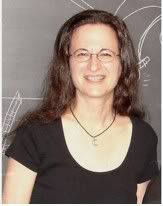 Abyss faced tough years. Cavelos had no illusions about making a horror imprint acclaimed and successful in such uncertainty. “We all went into it knowing we were bucking the trend. The biggest difficulty Abyss faced was the meltdown of the wholesale market, which occurred in the early 1990s. Wholesalers sell books to grocery stores and drug stores, and those outlets used to sell a huge percentage of the books sold. These days, they sell a much smaller percentage. The perception of the sales force at Dell was that horror was "downmarket" - it was bought by people who buy their books at grocery stores and drugs stores, not by more "upmarket" readers who go to bookstores. So they offered a special Abyss discount to wholesalers, encouraging them to order huge quantities of all the titles. Since the wholesale market was failing, and Abyss books were not "downmarket" at all, many of these books went unsold, hurting our bottom line. After several years, the wholesalers finally started ordering fewer copies, leading to more realistic print runs, higher sell-through rates, and more profitable books. The Abyss books settled into general sales about twice the level of most of the Dell mystery titles.
Abyss faced tough years. Cavelos had no illusions about making a horror imprint acclaimed and successful in such uncertainty. “We all went into it knowing we were bucking the trend. The biggest difficulty Abyss faced was the meltdown of the wholesale market, which occurred in the early 1990s. Wholesalers sell books to grocery stores and drug stores, and those outlets used to sell a huge percentage of the books sold. These days, they sell a much smaller percentage. The perception of the sales force at Dell was that horror was "downmarket" - it was bought by people who buy their books at grocery stores and drugs stores, not by more "upmarket" readers who go to bookstores. So they offered a special Abyss discount to wholesalers, encouraging them to order huge quantities of all the titles. Since the wholesale market was failing, and Abyss books were not "downmarket" at all, many of these books went unsold, hurting our bottom line. After several years, the wholesalers finally started ordering fewer copies, leading to more realistic print runs, higher sell-through rates, and more profitable books. The Abyss books settled into general sales about twice the level of most of the Dell mystery titles.
“So when I decided to leave Dell to focus on my own writing, I thought that Abyss would survive. The editor-in-chief asked my advice about candidates to replace me. Ultimately, though, they decided to give the Abyss books to several editorial assistants to handle. None of them was terribly passionate about horror, and none of them had sufficient power in the company to fight for the line.
That lack of passion signalled the end for both imprints. “Publishing is a personality-driven business, at least on the editorial end. The publishing house publishes the books the editors like. If there's no editor to get in people's faces and ensure her books get attention, then the books fade and die. That's what happened to Abyss.
“I think that the company was hoping that Abyss sales would reach the levels that horror did when it was hot in the 1980s, and that simply wasn't possible in the 1990s.”
The horror bust of the 1990s still stings in the memories of professionals who survived it, and the boom of the 1980s has been seen as a quasi-golden age. But perhaps the boom was the anomaly, as writer/editor Nick Mamatas has suggested, and the bust is the normative state of the field. On this point, Cavelos offered this view.
“Booms are certainly anomalies by their very nature, and they come and go. We're in the midst of one now, of a genre we're calling urban fantasy, but in reality is horror with the teeth removed. More booms will come in the future.
“The 'normal' level of horror sales is open to argument. I would argue that horror readers can sustain a higher level of sales (of mid-list titles by relative unknowns) than mystery readers. The main problem, as I see it, is that editors, in general, like mysteries a lot more than they like horror.”
The Future
In 1994, Cavelos herself left full-time editing to focus on her own writing and establish the Odyssey Writing Workshop in Manchester, New Hampshire, the only senior workshop that actively caters to science fiction, fantasy, and horror writers who are at near-publishing level.
New York’s loss was Manchester gain, as Odyssey has helped produced such horror and dark fantasy 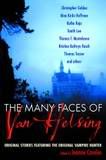 writers as New York Times bestselling author Carrie Vaughn, World Fantasy award winner Theodora Goss, as well as Rita Oakes, Lynda Rucker, and others who appear regularly professional magazines and in Years Best anthologies. Cavelos herself garnered a Stoker nomination for her anthology The Many Faces of Van Helsing, which featured many familiar faces from the Dell Abyss line (Koja, Tem), as well as Odyssey graduates (Oakes), and such rising stars as Joe Hill and J. A. Konrath. She is also poised to finish her much anticipated horror/science fiction thriller Fatal Spiral. While the Dell Abyss line is greatly missed, Jeanne Cavelos is still a powerful force for good in dark fiction.
writers as New York Times bestselling author Carrie Vaughn, World Fantasy award winner Theodora Goss, as well as Rita Oakes, Lynda Rucker, and others who appear regularly professional magazines and in Years Best anthologies. Cavelos herself garnered a Stoker nomination for her anthology The Many Faces of Van Helsing, which featured many familiar faces from the Dell Abyss line (Koja, Tem), as well as Odyssey graduates (Oakes), and such rising stars as Joe Hill and J. A. Konrath. She is also poised to finish her much anticipated horror/science fiction thriller Fatal Spiral. While the Dell Abyss line is greatly missed, Jeanne Cavelos is still a powerful force for good in dark fiction.
More about Jeanne Cavelos



